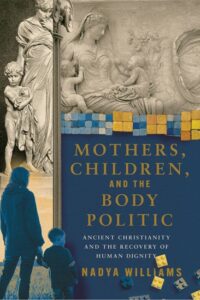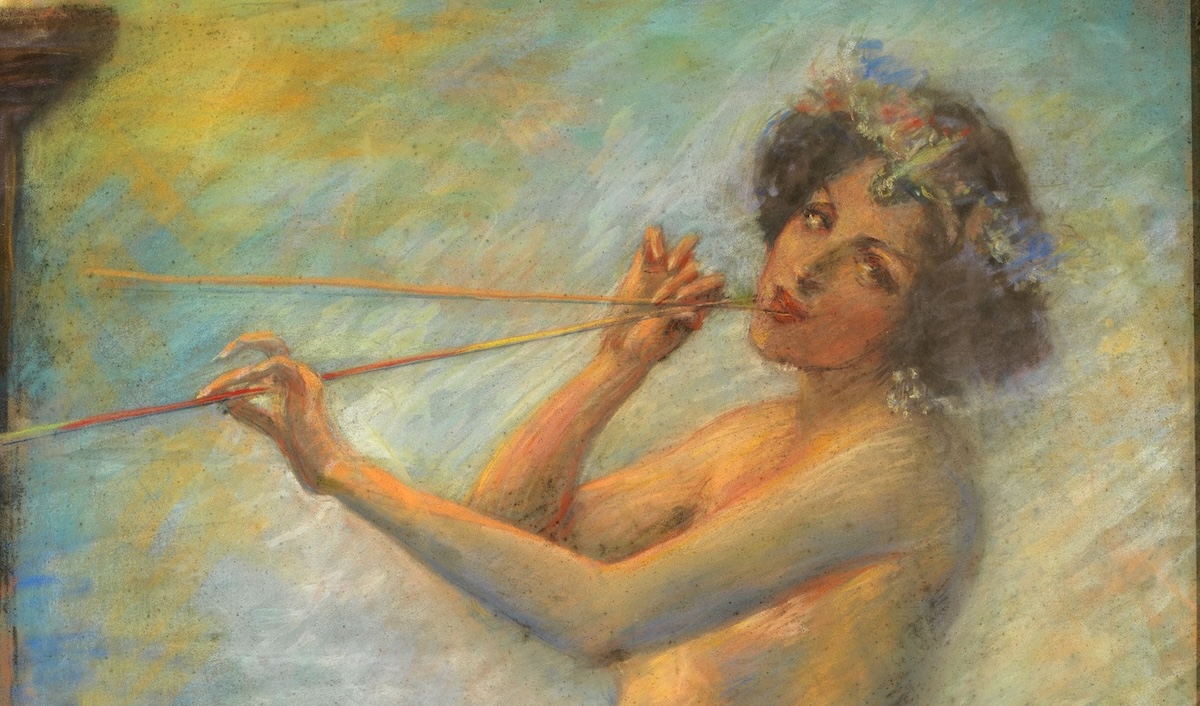Earlier this year, the Pew Research Center published the latest results of its ongoing Religious Landscape Study (RLS), a nationwide survey of over 35,000 Americans. A little thrill of excitement rippled through the cultural atmosphere, especially among believers who saw the study’s most widely-publicized finding summarized in headline form: “Decline of Christianity in the U.S. Has Slowed, May Have Leveled Off.”
It was a rare glimmer of hope that Christianity’s long retreat from public prominence might be coming to an end. In general, it felt consonant with the much-discussed idea that something—the vibes, the momentum, the mood—may be shifting in the West. A renewed interest in faith would be in keeping with the trajectory of that shift.
But what if the change we’re living through isn’t a rebirth of Christianity exclusively so much as a reawakening of the religious impulse in general, a burst of spiritual enthusiasm that might be directed any number of ways? If so, a major task before modern societies will be figuring out how to channel that enthusiasm productively rather than destructively. Some of the RLS findings do show the potential for America to rediscover its ancestral faith. But they’re also in keeping with another, more troublesome recent trend: the return of paganism.
I call it a return because paganism is, in a sense, the default human spirituality. Yet today’s neo-paganism is different from its pre-Christian ancestor, precisely by virtue of its presence in societies that are steeped in centuries of Christian history. These societies might become more Christian, or they might become post-Christian, but they can never rewind time and become pre-Christian.
There is a distinction, not often observed, between “wild” animals—which have never been domesticated—and “feral” ones, which were once domesticated but have reverted to their untamed state. This is what makes neo-paganism different from ancient paganism: it can never be wild. It can only be feral. That’s why it so often evinces a nihilistic, anti-natal, destructive spirit, lashing out against the vestiges of Christian culture that surround it. If modern Christians hope to channel this resurgence of spiritual fervor in a more monotheistic and humane direction, they are going to have to emulate the spirit of their ancient forebears—but with a modern twist. In short, they’re going to have to convert the neo-pagans.
“Spiritual, But Not Religious”
“The Sea of Faith,” wrote Matthew Arnold, “Was once… at the full, and round earth’s shore / Lay like the folds of a bright girdle furled. / But now I only hear / Its melancholy, long, withdrawing roar.” That was 1867. Since then—despite a few promising wavelets—the sea of faith in Europe and America has continued to recede. The long withdrawing roar has grown, to borrow a phrase from Ross Perot, into a giant sucking sound.
In Arnold’s native England, census data for 2021 revealed that less than half the population identified as Christian, probably for the first time since Gregory the Great sent Augustine of Canterbury to convert the Anglo-Saxons at the end of the sixth century. In America, the RLS has been tracking a steady decline in Christian practice across all fifty states. Other faiths have gained a little ground, but the main trend for years has been the rise of the “nones”—those who believe, to use Pew’s marvelously indifferent phrasing, in “nothing in particular.”
That is why it seemed momentous when the RLS showed that professing Christians had held steady at just over 60 percent of the U.S. population for several years running. Meanwhile, Bible sales in the United States have been rising quite steeply. Notably, young men seem particularly interested in more rigorous and traditional denominations. Regular church attendance in England is up 50 percent over the last six years, and among Gen Z (ages 18-24) it has quadrupled.
All that is noteworthy, but it does not a revival make. Young weekly churchgoers are still vastly in the minority among their peers (16 percent in the U.K., 18 percent in America). Formal religious observance is more popular than it has been, but it’s by no means the only way that people are expressing their newfound sense of devotion. Indeed, one intriguing result from the latest RLS is that religious observance seems to have bottomed out at a much lower level than religious belief.
Around 70 percent of all Americans identify with some sort of religion, but the number who go to services at least once a month is hovering at around 33 percent. Slightly more Americans (44 percent) say they pray every day. Some number of the rest probably affiliate themselves with a church out of cultural or ancestral habit. But a huge majority of those surveyed (83 percent) said they “believe in God or a universal spirit.” In other words, though some people identify with a particular church but don’t believe, there are also quite a few people who believe but don’t go to church.
Fifteen percent of those who consider themselves “religiously unaffiliated” still think there is probably a “God or a universal spirit.” Twenty percent practice no religion but believe in a soul. These are the people who believe not in “nothing in particular,” but in something or other—some generalized deity or reality beyond the material. More Americans belong to this group than to every other religious organization, besides the Christian church, combined. You could call them “spiritual, but not religious.” You could also, somewhat more provocatively, call them pagans.
Feral Paganism
T.S. Eliot, who saw the coming of modernity for exactly what it was, predicted in 1939 that a society which ceased to be Christian would be vulnerable to “varieties of irresponsible and irreflective enthusiasm followed by a second crop of paganism.” More recently, historian Tom Holland has argued that Christianity represents a revolution in moral assumptions, particularly in its concern for the weak and its insistence on the sanctity of every human life. If those assumptions were to be overturned, it would mean the installation of what Louise Perry has described as “a fundamentally different outlook on the world, and on the sacred.”
To some extent, the pagan way of looking at things is the natural way. Left to their own devices, most people will discern that the physical world exhibits a certain order and is governed by powers outside of human control. The behavior of these powers—the intricate cyclical motion of the planets, say—betrays an exquisite, if somewhat inscrutable, rationality. The most obvious response is to worship a mind or minds somewhere in nature, where the reason that governs the universe can be said to reside. This is paganism, whether it attributes divine power to minor regents who govern particular areas of the cosmos—dryads, nymphs, etc.—or to an all-encompassing but abstract divine mind such as the Stoic logos.
Notwithstanding the last few centuries of fashionable unbelief, some form of paganism has been the norm for most of human history. Absent any Abrahamic revelation or catechism to make specific claims about God’s character and person, most civilizations will gravitate toward some form of pantheism or polytheism. Today, there are 74,000 people and counting in the United Kingdom who identify expressly as pagans, along with 8,000 Shamans who describe their practice as “not a religion, more an authentic expression of mankind’s spirituality.” St. Paul, weeping, might have agreed.
If humanity is returning to its default pagan setting, however, not all the consequences will be savory. As Perry rightly observes, pagan societies often shrugged at infanticide and positively valorized suicide. These practices are returning in mutated form as casual abortion and increased acceptance of euthanasia. The difference is that now these pagan behaviors are taking place in societies shaped for centuries by Christian teaching, which forbids them. The result can only be a profound and disturbing identity crisis.
Perhaps this helps explain why modern spirituality, when it takes pagan forms, tends to be destructive or at least severely critical of the Western civilization within which it operates. The most obvious example is radical environmentalism, which has taken on a distinctively reverential tone that might have made sense to communicants at the Eleusinian nature-rights of the Greek goddess Demeter. Apple’s notorious sustainability “update,” in which Octavia Spencer appeared as a vengeful Mother Nature, threatening punishment and demanding shows of devotion, may have been less metaphorical than executives realized. A movement that threatens the end of the world unless the Earth is appeased with sacrifice—especially when the link between the sacrifice and the appeasement is rather less scientifically firm than advertised—can only be called a (neo-pagan) cult.
There are others. Tech enthusiasts speak of “building god” and biohacking humanity to commune directly with machines in the language of pure data. Thousands of users now seem to think ChatGPT is a transcendent divine hyper-intelligence, much like the disinterested and inhuman gods described by the Greek philosopher Epicurus. During the pandemic, #crystaltok racked up billions of views on TikTok, reflecting a keen and growing interest in crystal therapy, astrology, and vision questing—pagan augury, refitted to the digital world. Meanwhile, men who prefer sun and steel to woo and woo are called “vitalists.” They revere strength, beauty, and often the Greek gods, who are paragons of both. It’s possible to find some of these attitudes and practices combined, however uneasily, with professions of Christian faith. But it’s also common to find them justified by a forthright Nietzschean rejection of Christian “slave morality” in favor of pagan vigor. As one proselyte put it: “Christ is dead. Zeus is king.”
A Neo-Pagan Political Minority
These neo-pagan trends are emerging, crucially, in countries that think of themselves as liberal democracies and do not recognize themselves as pagan. This is a total departure from the ancient situation, one whose significance has not yet been sufficiently appreciated. It’s not too much to say that ancient religion was state religion, insofar as political rulers dictated the terms of worship in their respective regions. A local deity whose partisans found themselves conquered by a neighboring power would either be incorporated into the victor’s pantheon or obliterated altogether. Ashurbanipal of Assyria, upon conquering his enemies the Elamites in the seventh century B.C., boasted that he “counted their gods and goddesses as ghosts.” By and large, a similar fate awaited any pagan sprite who ended up on the bad side of the reigning authorities.
Modern pagans, by contrast, live within the borders of historically Christian nations which then became democracies. The result is that we moderns have something to contend with that may be unheard-of in history: namely, a pagan political minority. This would help account for the fact that neo-pagan constituencies so often express themselves in terms of disaffection, protest, or outright rejection of the entire dominant paradigm. They sense that their emerging belief system has no place within it as currently constituted. Perhaps they are right.
Environmentalists desecrate monuments and works of art, disrupt international government meetings, and block off commercial thoroughfares as ways of expressing their belief that a society which fails to recognize the absolute priority of climate justice should shut down or be wiped from history. Nietzschean vitalists “take the red pill” or “go their own way” in protest against an arrangement between the sexes inherited from Christian chivalry, which they feel goes against the grain of men’s natural superiority and has therefore ceased to function. If the pagans of old were inclined to build cities and towers that reached to the heavens, the pagans of today seem more inclined to “nope out.”
Some of them also, and for the same reasons, seem disinclined to have kids. Birth rates are in existential free-fall pretty much around the world. The reasons for this are many. As economist Catherine Pakaluk has argued, women who must give up or curtail a career to raise kids face vastly higher opportunity costs when choosing motherhood than their ancestors did. But Pakaluk’s research also shows that one of the only things which can reliably offset those costs is the belief, underwritten in many cases by Jewish and Christian teaching, that human life is inherently worthwhile.
Neo-paganism, however, is liable to be somewhat bleaker about the value of the human species. “Fear of a degraded future due to climate change” is a major reason not to reproduce according to Dr. Britt Wray, a “human and planetary health fellow” at Stanford University. It’s common to find arguments like this retailed among the 232,000 followers of the discussion board r/antinatalism: “my mere existence cause [sic] pain to everything around me, nature and environment.” Or, in the words of Les Knight, founder of the Voluntary Human Extinction Movement, “look at what we did to this planet. We’re not a good species.”
This is what you might call civilizational failure mode. “I never will suppose…a state to be the worst of all political institutions which by experience is found to contain a principle favorable (however latent it may be) to the increase of mankind,” wrote Edmund Burke. Implicitly, then, if we follow Burke’s logic, any state containing a principle unfavorable to the increase of mankind is in deep trouble.
Will We Choose Life or Death?
If religious fervor is in fact returning to the West, much will depend on whether it finds expression in life-affirming reverence or apocalyptic death cults. To encourage a positive outcome, old-school liberals in general and Christian churches in particular may have to do something they have not had to do at scale in quite some time: they may have to convert the pagans.
Luckily, that is a practice with a long history. If the annals of relations between Christians and pagans contain plenty of invective and polemic, they also contain plenty of fellow feeling and stories of rapprochement. “‘We are his offspring,’ as some of your own poets have said,” Paul told the Greek philosophers, appealing to Stoic teaching as a way of affirming the sanctity of human life. If pagan sentiment has the potential to turn grim and dour, it also has the potential to serve as raw material for a genuinely wholesome, constructive, and life-giving faith. It’s certainly less of a dead end than the low consumerism reflected in the DINK (dual-income no-kids) movement, or the doctrinaire materialism often preached erroneously in the name of science.
If the sea of faith comes rushing back in, it will sweep away all that and bring with it a perilous but powerful new energy. The future will belong to whoever can ride the waves. For the sake of the least among us—which at one time or another is all of us—let’s hope it’s the Christians.
This piece was originally delivered as a speech at the Family Formation and the Future conference at the Danube Institute in Budapest, Hungary on April 2, 2025.



